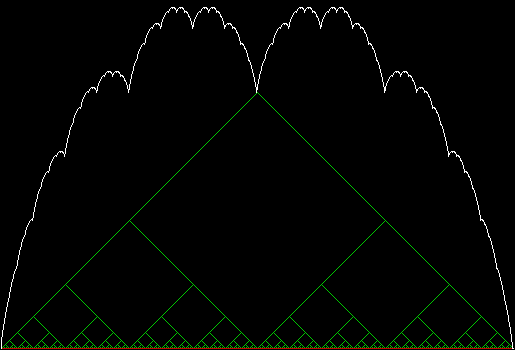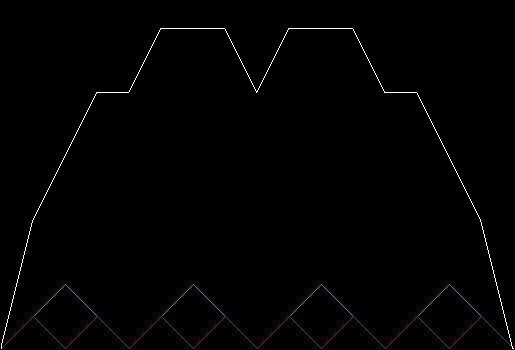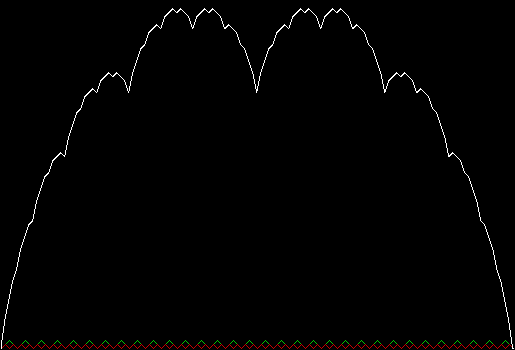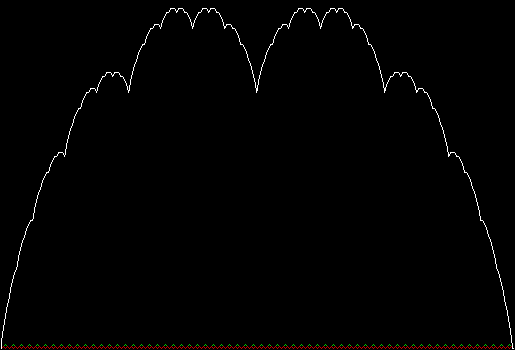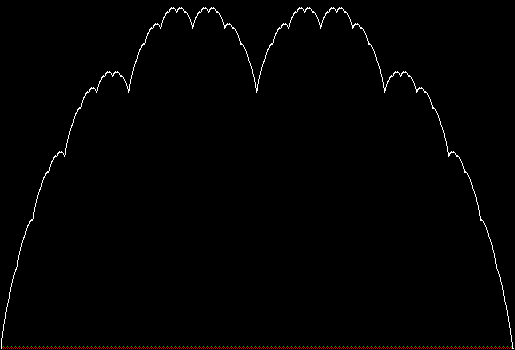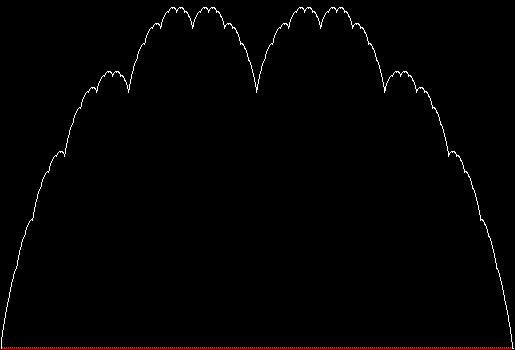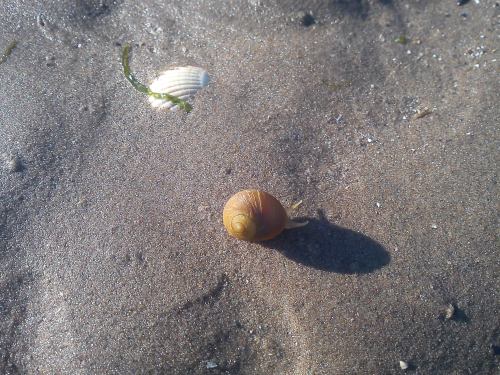Suppose four mice are standing on the corners of a large square. Each mouse begins running at the same speed towards the mouse one place away, reckoning clockwise. The mice will meet at the centre of the square and the path taken by each mouse will be what is known as a pursuit curve:
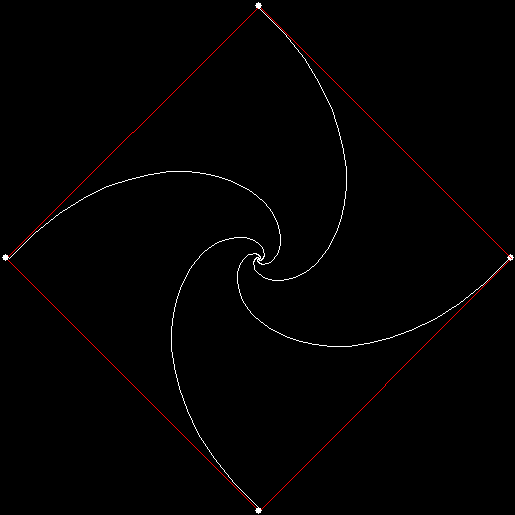
vertices = 4, mouse-increment = 1
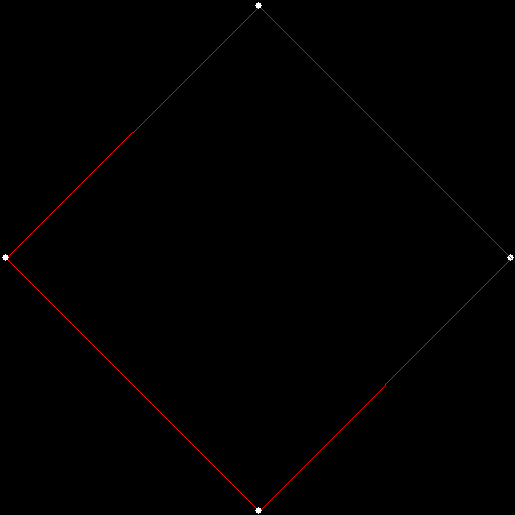
v = 4, mi = 1 (animated)
As I showed in “Persecution Complex”, it’s easy to find variants on the basic pursuit curve. If mi = 2, i.e. each mouse runs towards the mouse two places away, the mice will run in straight lines direct to the centre of the square:

v = 4, mi = 2
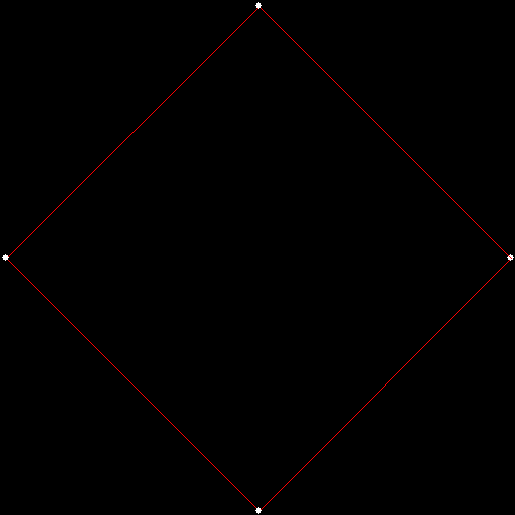
v = 4, mi = 2 (animated)
That variant is trivial, but suppose there are eight mice, four starting on the corners of the square and four starting on the midpoints of the sides. Mice starting on the corners will run different pursuit curves to those starting on the midpoints, because the corners are further from the centre than the midpoints are:
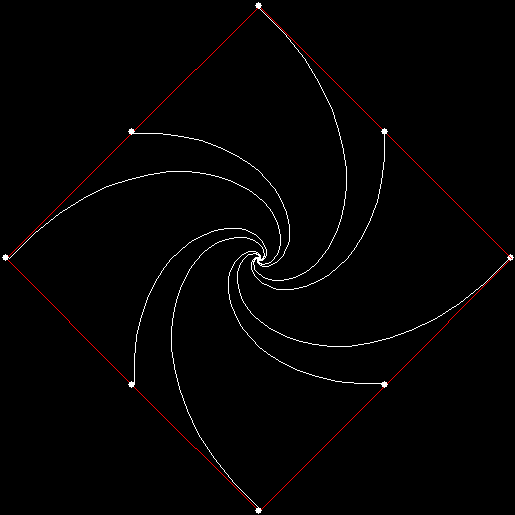
v = 4, si = 1, mi = 1
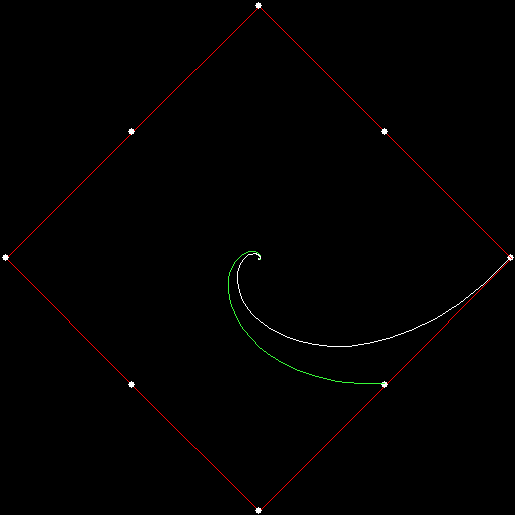
If mi = 3, the pursuit curves look like this:

v = 4, si = 1, mi = 3
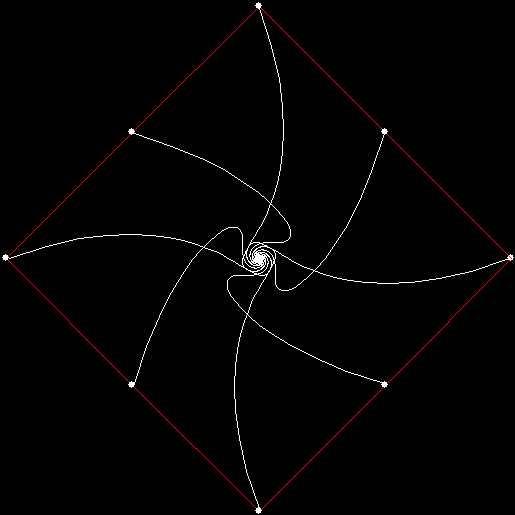
v = 4, si = 1, mi = 3 (animated)
Suppose there are twelve mice, four on each corner and two more on each side. If each mouse runs towards the mouse four places away, then the pursuit curves don’t all meet in the centre of the square. Instead, they meet in groups of three at four points equidistant from the centre, like this:
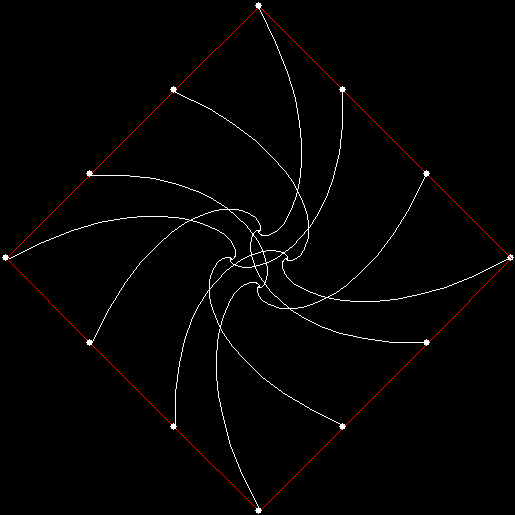
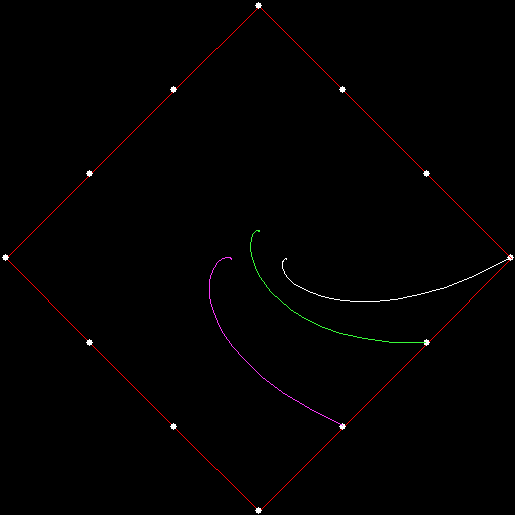
v = 4, si = 2, mi = 4

v = 4, si = 2, mi = 4 (animated)
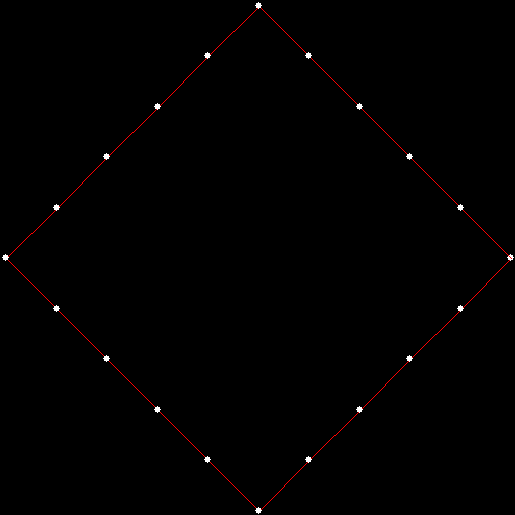
v = 4, si = 4, mi = 4 (animated)

v = 4, si = 4, mi = 4 (zoom)
Now suppose each mouse become sophisticated and runs toward the combined positions of two other mice, one two places away, the other three places away, like this:

v = 4, si = 1, mi = (2, 3)
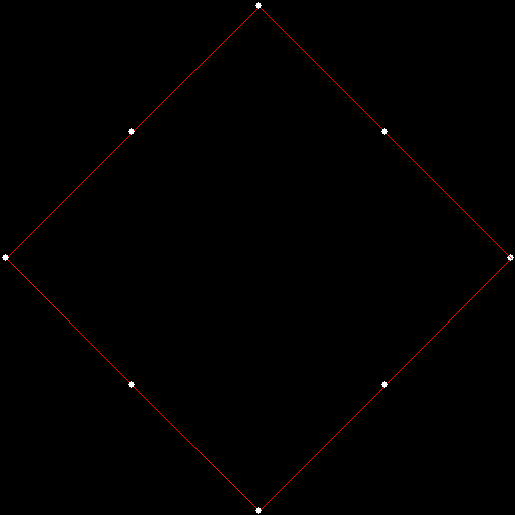
v = 4, si = 1, mi = (2, 3) (animated)
These polypursuits, as they could be called, can have complicated central regions:
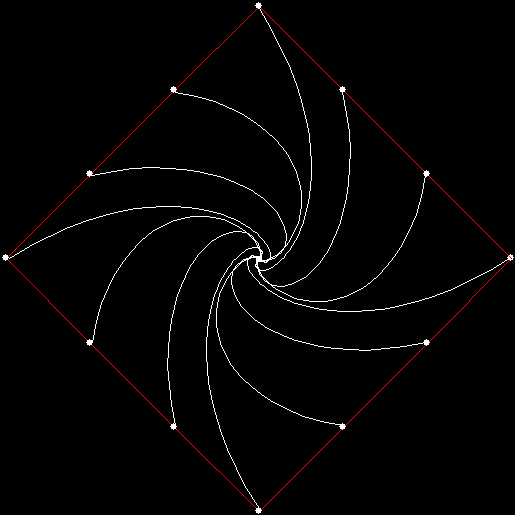
v = 4, si = 2, mi = (1, 4)

v = 4, si = 2, mi = (1, 4) (animated)
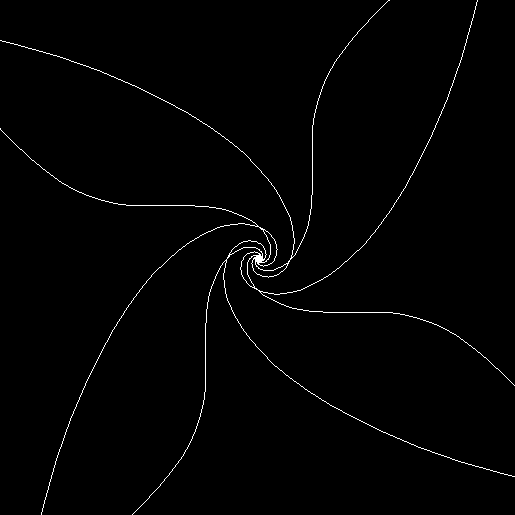
v = 4, si = various, mi = various
And what if you have two teams of mice, running towards one or more mice on the other team? For example, suppose two mice, one from each team, start on each corner of a square. Each mouse on team 1 runs towards the mouse on team 2 that is one place away, while each mouse on team 2 runs towards the mouse on team 1 that is two places away. If the pursuits curves of team 1 are represented in white and the pursuit curves of team 2 in green, the curves look like this:

v = 4 * 2, vmi = 1, vmi = 2

v = 4 * 2, vmi = 1, vmi = 2
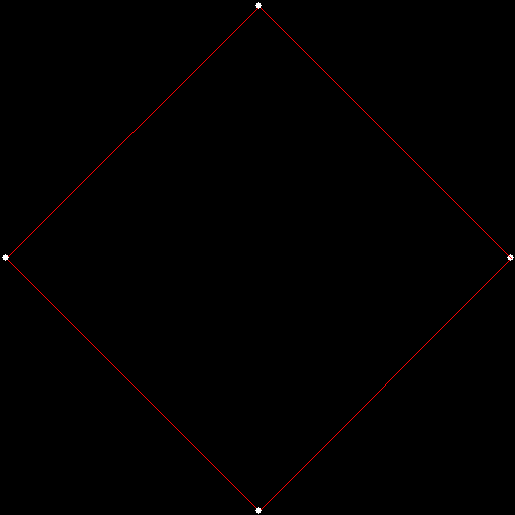
v = 4 * 2, vmi = 1, vmi = 2 (animated)
Now suppose the four mice of team 1 start on the corners while the mice of team 2 start at the centre of the square.

v = 4, centre = 4, vmi = 1, cmi = 2 (white team)
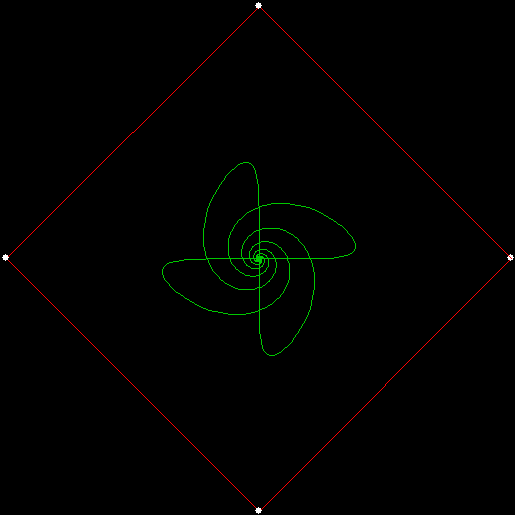
v = 4, centre = 4, vmi = 1, cmi = 2 (green team)

v = 4, centre = 4, vmi = 1, cmi = 2 (both teams)
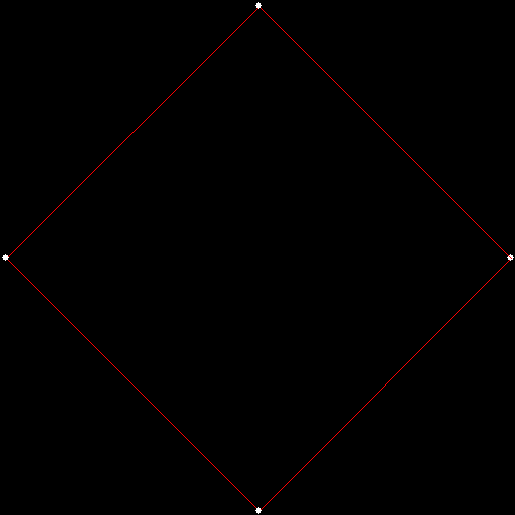
v = 4, centre = 4, vmi = 1, cmi = 2 (animated)
Here are more variants on pursuit curves formed by two teams of mice, one starting on the corners, one at the centre:

v = 4, centre = 4, vmi = (0, 1), cmi = 0
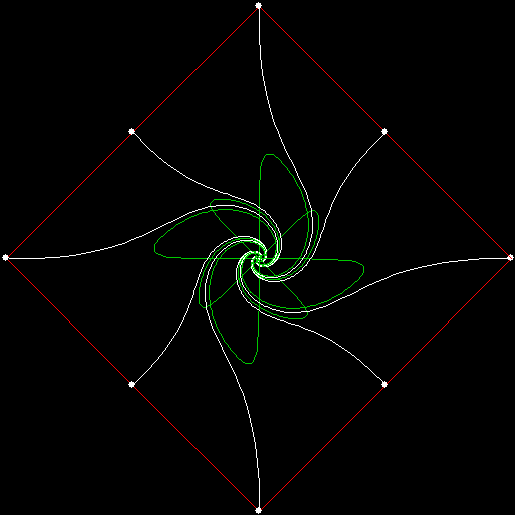
v = 4, centre = 4, vmi = (0, 2), cmi = 0
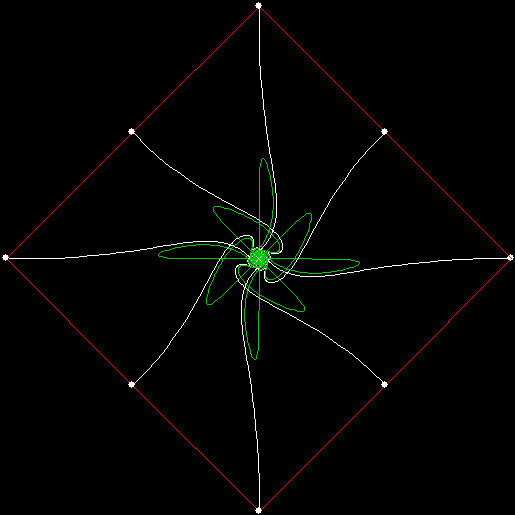
v = 4, centre = 4, vmi = (0, 3), cmi = 0
































